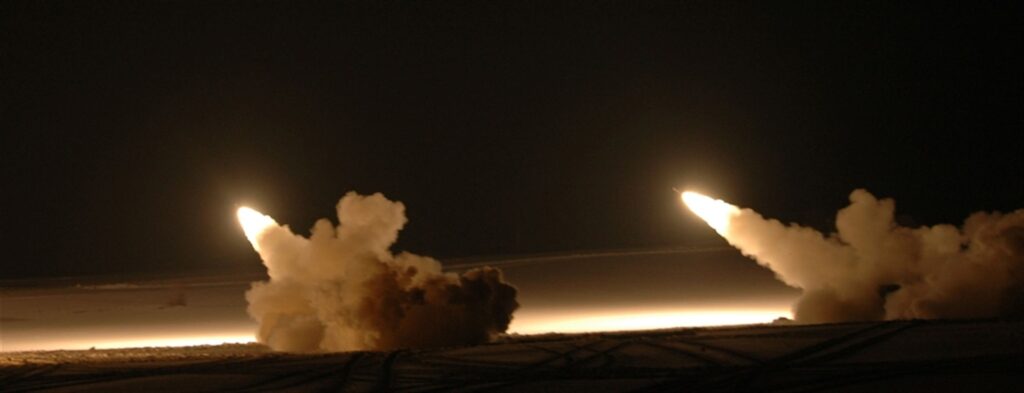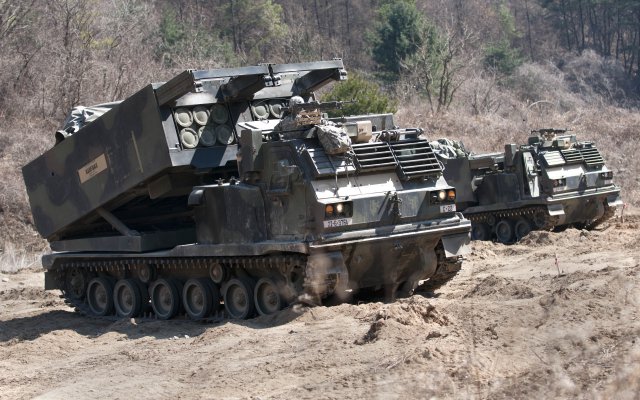Bring Back Artillery Submunitions; Russian Threat Too Great
Posted on
 Bob Scales has run a lot of war games. I covered him doing them back in the late 1990s. Plus he’s held a lot of the most important jobs in the Army, including at the Army’s home of artillery, Fort Sill. He was around when the battle was on to ban landmines, which bear many similarities to the cluster munitions he discusses here. So when Scales sent us an op-ed on the topic, we had no hesitation in deciding to run it. Read on. The Editor.
Bob Scales has run a lot of war games. I covered him doing them back in the late 1990s. Plus he’s held a lot of the most important jobs in the Army, including at the Army’s home of artillery, Fort Sill. He was around when the battle was on to ban landmines, which bear many similarities to the cluster munitions he discusses here. So when Scales sent us an op-ed on the topic, we had no hesitation in deciding to run it. Read on. The Editor.
I heard about “cofram” during my first assignment to Europe in 1966. At the time, these weapons were so secret that they were treated like nuclear weapons. The Cold War Army was convinced that cofram was so destructive that it would even the odds in a firepower duel with the Soviet Army.
The idea for cofram (short for controlled fragmentation) emerged during the Korean War when the Army concluded that artillery was no longer an effective killer. The “single point” detonation of a conventional cannon round threw bits of the shell body out in an irregular pattern that rarely hit anything. An enemy soldier would only become a casualty if caught standing in the open when a round landed nearby.
The Chinese in particular were very difficult artillery targets. They hid in tunnels and caves and camouflaged themselves thoroughly. Often massed American artillery units would hurl trainloads of shells in massive barrages to little effect. The Army concluded from years of experimentation that lethality could be multiplied by multiplying the number of detonations per shell. They did this by stuffing dozens of tiny bomblets (or submunitions) into each round. Lethality was further amplified by scoring the inside of each golf ball sized bomblet allowing it to propel hundreds of very small shards in all directions when exploded. The difference in lethality between conventional single point versus multipoint detonations was ten orders of magnitude.
The Army refused to authorize use of cofram fearing the Soviets would reverse engineer the technology. All that changed during the Tet Offensive in 1968. My Vietnam firing battery fired it that year in the Au Shau Valley. We called it “firecracker” because the sound of the exploding bomblets resembled Chinese firecrackers. The effects were staggering. A single battery volley of firecracker bursting among an NVA force would paralyze it immediately. Not many would die but virtually every attacking enemy soldier would be peppered with multiple wounds.
The Army built on the success of firecracker after Vietnam by developing a “dual Purpose” bomblet, about the size of a flashlight battery that killed soldiers and also penetrated several inches of armor. Dual-purpose firecracker (or DPICM) was our decisive weapon against Saddam’s artillery during the Gulf War. The Iraqis called it “steel rain.” On the first day of the ground war American Multiple Launch Rocket Systems (MLRS) firing steel rain obliterated Saddam’s artillery in a massive series of daylong barrages. Thanks to steel rain, the Iraqi artillery never posed a threat to our troops.

Multiple Launch Rocket System MLRS
The Russians went to school on us after witnessing the destruction of their own artillery in the hands of the Iraqis. Over the past 20 years the Russians have improved on our steel rain technology by developing a new generation of bomblet munitions that are filled with thermobaric explosives. These munitions generate an intense, blast wave of exploding gasses that are far more lethal than conventional explosives. A volley of Russian thermobaric steel rain delivered by a single heavy-rocket launcher battalion produces a lethal area 10 times greater than an American MLRS battalion firing conventional, single-point detonating warheads.
Today we can only fire single point detonating artillery because America’s steel rain — millions of shells and warheads — is gone, intentionally destroyed, sacrificed to the gods of political correctness by the last two presidential administrations. They agreed to give up all submunition weapons after other nations (who have no steel rain) signed a treaty banning such weapons, arguing they produce too many duds. Who has not signed the treaty? Among others, Russia, China and Israel. The United States hasn’t signed the 2008 Convention on Cluster Munitions either, but claims to abide by it.
Should we ever go to war against the Russians or a Russian surrogate again the consequences would be catastrophic. Some argue that our dominance in precision-guided munitions obviates the need for steel rain. Not so. Precision-guided artillery is fine for “plinking” discrete targets such as individual high-value vehicles or people. But delivering precision is a slow and involved process that requires linking aircraft or drones to a firing battery. Such a delicate “system of systems” would be smothered very quickly under the crush of millions of deadly thermobaric warheads landing in a single massed volley. Plus, we have far fewer precision rounds than the Russians have guns and rockets.
As part of a pervasive program of reform we must bring back steel rain and amplify its killing power with thermobaric warheads. The danger of duds littering a future battlefield can be mitigated to some degree by developing fuses that self-destruct after a few hours on the ground. Of course the dud problem will remain no matter how hard we try to eliminate it. But our policy makers in the next administration must balance the risk of the accidental death of an innocent who disturbs a dud with the terrifying prospect of hundreds if not thousands of American soldiers lying dead on a future battlefield — needless casualties of an enemy’s more lethal artillery.
Bob Scales, once the Army’s top futurist and commandant of the Army War College, also commanded the Army Field Artillery School at Fort Sill. Scales, the president of Colgen, Inc., is not working for or with any companies involved in the manufacture of submunitions.
Subscribe to our newsletter
Promotions, new products and sales. Directly to your inbox.
